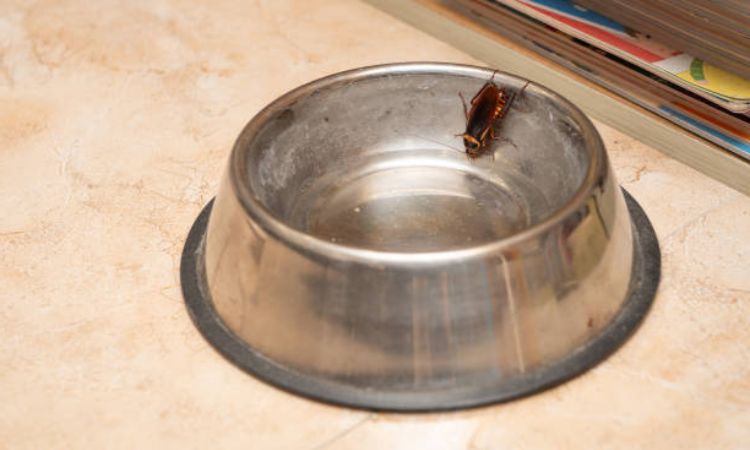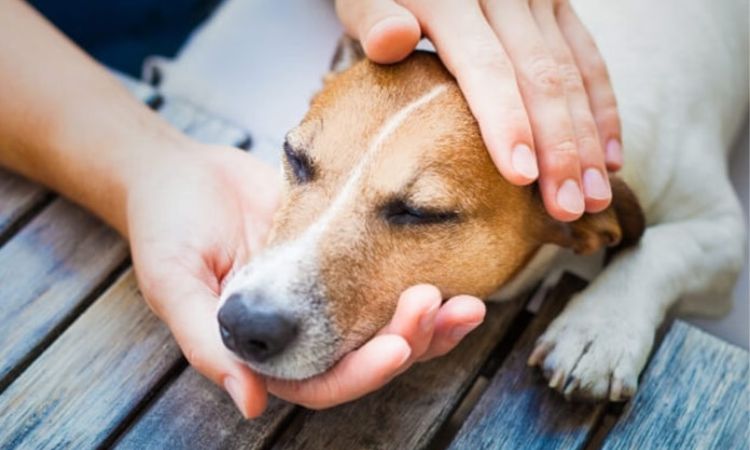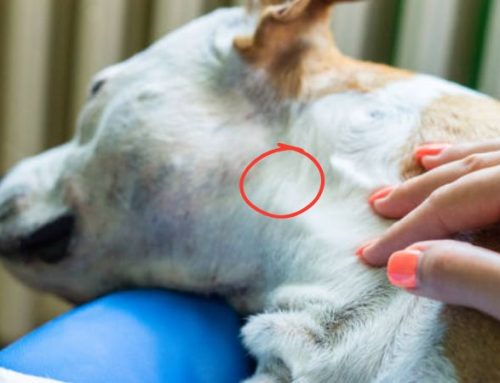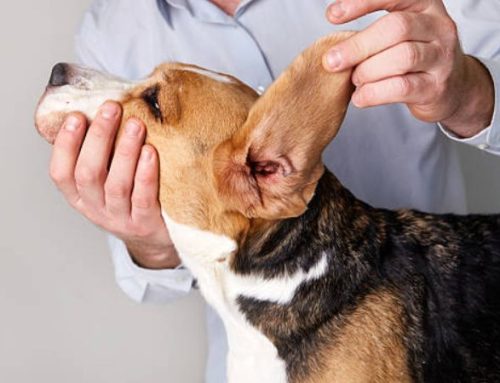Puppies and dogs are curious explorers, and sometimes that curiosity takes a crunchy, creepy-crawly turn. While a lone cockroach isn’t likely to poison your furry friend, letting them snack on every insect they catch can lead to unexpected tummy troubles or exposure to harmful substances.
So, do dogs actually eat cockroaches? And what are the real risks if those roaches have been laced with poison? Nexus Pets breaks it down, helping you keep your pup safe while satisfying their wild little instincts.
Do Dogs Eat Cockroaches?
Dogs are curious creatures, and their instincts often lead them to explore things we might find gross like cockroaches. While it might make some pet owners cringe, eating insects is not uncommon for dogs, especially for puppies and breeds with a strong prey drive. Let’s break down why this happens and what the risks really are.

1. Why They Do It
Dogs are naturally wired with a prey drive a behavioral instinct inherited from their wild ancestors. This drive makes small, fast-moving creatures like cockroaches irresistible to chase and sometimes eat. Puppies, in particular, explore the world with their mouths, tasting and mouthing everything as part of learning. Even fully grown dogs may chase and consume insects out of boredom, curiosity, or sheer entertainment. The movement of a scuttling roach triggers their hunting instincts, and the crunchy texture adds a novel sensory reward.
2. Is the Cockroach Itself Harmful?
Generally, No (The Bug Itself)
For the most part, the cockroach itself is not toxic to dogs. Eating a single roach is unlikely to cause severe harm, and many dogs nibble on insects without any immediate problems.
The Minor Risks
- Gastrointestinal Upset: While cockroaches aren’t poisonous, their hard exoskeleton (chitin) can be tough for a dog’s digestive system to handle. Eating a roach may cause mild nausea, vomiting, or diarrhea, especially in smaller dogs or puppies with sensitive stomachs.
- Parasites (The Low Risk): There is a very slight chance that a cockroach could carry internal parasites, such as stomach worms. In developed countries, this risk is extremely low, but it is still possible. Regular deworming and routine veterinary care significantly reduce the likelihood of infection.
- The Primary Concern (The Link): The main danger isn’t usually the cockroach itself it’s what the cockroach has been exposed to. If a roach has ingested insecticides, poisons, or harmful chemicals, these substances can be toxic to dogs. Even a single poisoned insect could trigger serious symptoms, so it’s important to prevent dogs from consuming cockroaches in environments where chemicals might have been used.
Dogs often eat cockroaches because of natural curiosity and prey instincts. While the bug itself is generally harmless, minor gastrointestinal upset and the extremely low risk of parasites exist. The biggest threat is accidental ingestion of a poisoned cockroach. Awareness, supervision, and a clean, pest-managed home are key to keeping dogs safe.
The Critical Danger: Cockroach Poison Ingestion
When it comes to cockroaches, the insects themselves are usually harmless to dogs—but the real danger emerges when these bugs carry poison. Understanding how dogs might ingest these toxins and recognizing the risks is crucial for any pet owner.
Understanding the Threat
Dogs can be exposed to cockroach poison in a few different ways:
- Direct ingestion of bait: Dogs sometimes chew on bait stations, gel tubes, or other cockroach-killing products. Curious puppies and small breeds are especially at risk.
- Secondary ingestion via cockroaches: A dog may eat a cockroach that has recently come into contact with poison. While this is generally a lower-risk scenario, sensitive dogs or repeated exposure can still be dangerous.
Even a single ingestion can be serious, depending on the chemical involved and the size of your dog.

Common Types of Cockroach Poisons and Their Dangers
Cockroach control products vary widely in their active ingredients and toxicity to mammals. Here’s a clear breakdown of the most common chemicals:
1. Hydramethylnon and Fipronil (Gels/Baits)
- Toxicity Level: Low to mammals; the amount in one bait station usually poses minimal risk.
- Potential Symptoms: Mild gastrointestinal upset, such as vomiting or diarrhea. Rarely more serious effects occur unless large amounts are ingested.
2. Indoxacarb (Gels/Baits)
- Toxicity Level: Low to moderate in dogs.
- Potential Symptoms: Gastrointestinal issues including nausea, vomiting, and loose stool. Ingesting large amounts can increase risk of more severe symptoms, though most household exposures remain mild.
3. Boric Acid (Dust/Bait)
- Toxicity Level: Moderate; toxicity depends on concentration and quantity ingested.
- Potential Symptoms (High Doses): Vomiting, lethargy, tremors, seizures, or even kidney damage. While generally safe in small, accidental exposures, concentrated boric acid poses a real risk to pets.
4. Pyrethrins / Pyrethroids (Sprays/Foggers)
- Toxicity Level: High, especially in concentrated liquid or aerosol forms.
- Potential Symptoms: Severe reactions can include drooling, tremors, hyperthermia, seizures, and in extreme cases, respiratory distress. Dogs are usually exposed to these chemicals through direct contact rather than by eating a poisoned insect, but even secondary ingestion can trigger symptoms in highly sensitive pets.
What Happens If a Dog Eats Cockroach Poison
The outcome depends entirely on which chemical was ingested and how much. Even a small amount can cause mild symptoms in some dogs or severe reactions in others.
Key Takeaways for Dog Owners:
- Always treat any ingestion as an emergency.
- Seek immediate veterinary care, bringing the product label if possible.
- Monitor your dog closely for symptoms such as vomiting, drooling, tremors, seizures, or unusual behavior.
- Do not attempt home remedies like inducing vomiting unless directed by a veterinarian.
Because the risks vary so widely by chemical, the safest approach is to assume that any cockroach poison ingestion is potentially dangerous and requires professional evaluation.
What to Do If Your Dog Eats Poison
If you discover that your dog has ingested cockroach poison—or any other toxic substance—it’s crucial to act quickly but calmly. Following a structured approach can protect your dog and give veterinarians the information they need to provide effective treatment.
Do Not Panic
Staying calm is the first and most important step. Panic can make it harder to respond effectively. Immediately locate the product packaging or label—this contains essential information such as the active ingredient, concentration, and instructions for emergency personnel. Knowing exactly what your dog ingested is critical for determining the level of risk and appropriate treatment.
Contact a Professional Immediately
Time is of the essence when dealing with potential poisoning. Contacting trained professionals ensures your dog receives the fastest and safest care. Two essential resources are:
- Your Veterinarian or an Emergency Vet – Call immediately to explain the situation, the chemical ingested, your dog’s size, and the time of ingestion. They can provide guidance on whether your dog needs to be seen immediately or can be monitored at home.
- Pet Poison Control Hotlines – Experts can advise on urgent next steps and potential treatments:
- ASPCA Animal Poison Control Center: 888-426-4435
- Pet Poison Helpline: 855-764-7661
Having both resources on hand ensures that you get specialized guidance in real time.

Steps to Take at Home (Under Veterinarian Guidance Only)
While waiting for professional advice, you can take the following measures—but never attempt any treatment without explicit instructions from a veterinarian or poison control expert:
- Do Not Induce Vomiting unless instructed. Vomiting the wrong substance or at the wrong time can worsen your dog’s condition or cause aspiration pneumonia.
- Monitor Symptoms Closely: Watch for vomiting, diarrhea, excessive drooling, tremors, seizures, or unusual behavior. Document the onset and severity of any symptoms.
- Provide Detailed Information to the Vet: Include:
- Product name and active ingredients
- Approximate amount ingested
- Time of ingestion
- Any symptoms observed
Providing precise information allows your veterinarian to assess risk accurately, determine if emergency treatment is required, and guide interventions such as decontamination, activated charcoal administration, or hospitalization if necessary.






